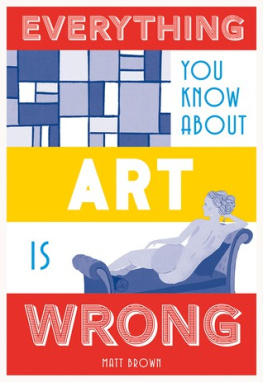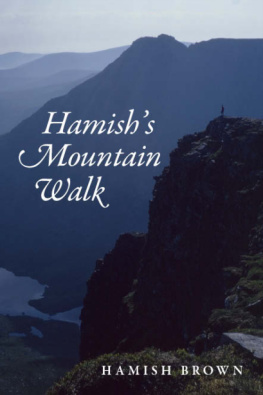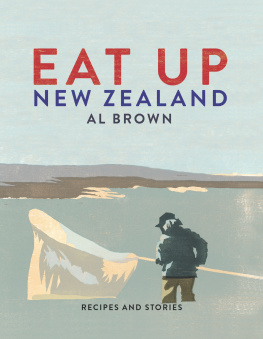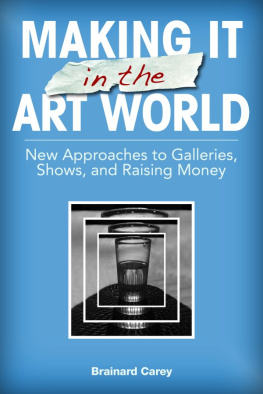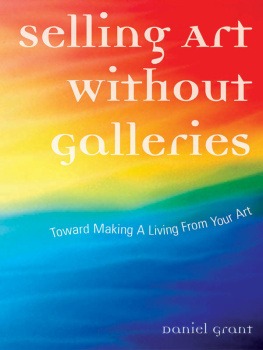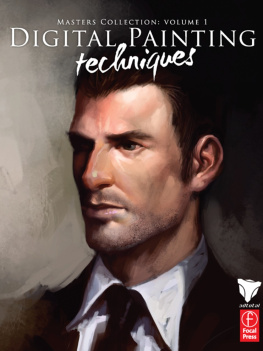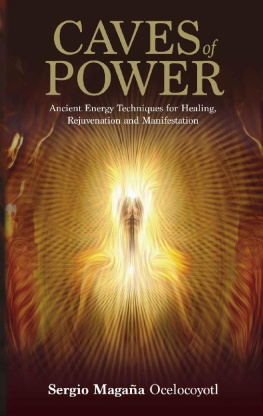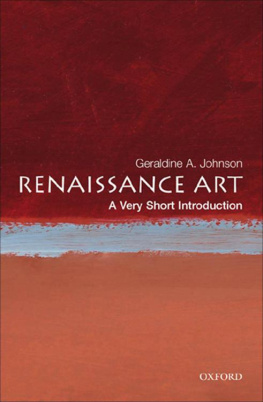Everything
You Know
About Art
Is Wrong
To Mum, Dad and Uncle Chris
Everything
You Know
About Art
Is Wrong
Matt Brown
Contents Introduction
The World of Art
All artists are tortured geniuses who live Bohemian but impoverished lifestyles
Art is a young persons game
Art is useless, a waste of money
Primitive art is inferior to Western art
A true work of art must be unique
Between the ancient world and the Renaissance, art was effectively dead
Art is all about wandering around galleries
Women couldnt make a career out of art until the 20th century
True artists should do the work themselves
Painting
The oldest art in the world can be found in the caves of Lascaux in France
Still-life paintings are dull and unimaginative
Caravaggio changed painting forever with his candlelit scenes
The Impressionists were the first to truly paint outdoors
Van Gogh only sliced off part of his ear
Kandinsky invented Abstract art
Painting is dead nobody does it anymore
Sculpture
Ancient sculptures are plain and boring
The Statue of Liberty is the largest sculpture in the world
Equestrian statues contain a hidden code showing how the subject died
Easter Island contains hundreds of mysterious stone heads
Architecture
There are three classical orders of architecture
The keystone is the most important stone in an arch
Nobody built in concrete before the 20th century
Modern architecture is all just monotonous glass and steel
Stonehenge was built by druids (and other landmark lies)
Other Art Forms
The invention of photography was seen as a major threat to artists
Walt Disney designed Mickey Mouse, who first appeared in Steamboat Willie
The famous tapestry made in Bayeux shows how King Harold took an arrow in the eye at the Battle of Hastings
Most street artists are teenage boys who illegally spray on walls
Conceptual art is a load of rubbish that anyone could put together
Arts Daftest Conspiracy Theories
The Mona Lisa is actually a hidden self-portrait of Leonardo
Michelangelo hid anatomical sketches in the Sistine Chapel
Van Gogh was colour-blind
Goyas Black Paintings were forgeries, made after his death
Rembrandt used mirrors and lenses to paint his masterpieces
Walter Sickert was Jack the Ripper
Leonardos Last Supper is full of secret codes
Further misquotes and minor misconceptions
Are you pronouncing it wrong?
Lets start a new wave of false facts
Further information
Index
About the author
Introduction
This is a book about the joys and opportunities of being wrong. Specifically, being wrong about art in any form. One of my earliest memories involves being wrong about art.
As a young child, I watched an art show in which the host created beautiful images with pastels. This was exciting. I wanted to have a go. If I could get my hands on some pastels, I could impress my chums, who were still struggling along with felt tips, wax crayons and the wishy-washy paints of the infant classroom. Pastels looked sophisticated.
Clutching my pocket money, I marched round to the supermarket, bought my supplies and headed into school. But something went wrong. My pack contained a range of coloured pastels, but none of them would leave much of a mark on paper. Worse, my sheet became torn and sugar coated as I dragged the pastels across its surface. Turns out that fruit pastilles are not the same thing as pastel crayons.
It was an embarrassing mistake, but one I never forgot. Thats the thing about getting something wrong it sticks in the memory. And that is where the inspiration for these books comes from. Presented in these pages are dozens of ideas about art that many of us take for granted which, with some probing, turn out to be wrong, or only partially correct.
Despite the title, my chief ambition here is not to poke holes in peoples knowledge nor to ridicule common ignorance. Rather, Im hoping to tell the story of art through a different filter. If its true that we learn best from our mistakes, then it seems to me that a focus on those mistakes is the most efficient way to get under the skin of a subject.
One of the pitfalls of describing art is that, to use an old clich, a picture is worth a thousand words. A writer will often spend several paragraphs minutely describing the appearance of a painting partly because the books illustration budget didnt allow for reproductions. Neither does mine. But nor, in the 21st century, does it need to. Most of us now have a smartphone or tablet within reach at all times you might even be reading on one. If I mention an unfamiliar work of art in the text, by all means look it up on an image search. Pan around; zoom in. Get a feel for the work before returning to the book. Its not cheating. Quite the opposite. You can often study paintings at far higher resolution than any print reproduction would allow, and Id rather fill these pages with intriguing stories than labour away at descriptions.
Another peril before me is the nebulous nature of the topic. The question What is art? has an infinity of answers, and my personal take on the subject may well be very different from yours. Ive chosen to focus on the so-called fine arts of painting and sculpture, with elements of drawing, photography and architecture thrown in for good measure. Im aware that the topics also have a strong bias towards Western art. This is a necessary and inevitable limitation of a book dealing with misconceptions among a mostly Western audience.
So, sit back, prepare to abandon your old beliefs and prejudices about art, open a packet of fruit pastilles, and let the nitpicking begin.
The World of Art
Before we get down to specifics, lets spend a chapter looking at the art world itself. What is art? How is it created? How is it displayed? And how true are the stereotypes about artists?
All artists are tortured geniuses who live Bohemian but impoverished lifestyles
We all have a picture in our heads of the stereotypical artist: a tatterdemalion maestro, frantically working at his canvas. A loner, locked away in his garret for hours, with only a bottle of absinthe, a pile of final demands and the demons in his head for company. The artist must suffer for his art.
Like all stereotypes, this picture contains a kernel of truth. Many artists have worked under impoverished conditions. Some of the biggest names in art suffered from mental-health issues. Plenty of artists have risked their well-being and finances in pursuit of creative perfection.
Is that right, though? Is it always like that? Well, of course not. Artists come in all shapes, flavours and income brackets, just like people of any other profession. Yes, there have been several notable artists with troubled minds van Gogh (185390) and Goya (17461828) to name but two but one might also list dozens of musicians, authors and composers who have struggled with mental-health difficulties. The list need not be limited to traditional creative types, either. Statesmen such as Caligula, Lincoln and Churchill, and the entrepreneur Howard Hughes, are all high-profile examples. Artists have no monopoly on a tortured mind.
What about the notion that mental instability can drive creativity? After all, van Gogh painted some of his greatest works, including Starry Night , while living in a mental asylum. The old platitude that theres a fine line between madness and genius might seem reasonable. After all, creative people are, by definition, those who are able to use their minds in ways that others cant. Indeed, scientific studies, published in respectable journals, have shown links between creativity and mental illness. In one study, artists and other creative professionals were found to be 25 per cent more likely to carry genes associated with bipolar disorder and schizophrenia. To bend a crass clich, you dont have to be crazy to work as an artist, but it helps.
Next page
